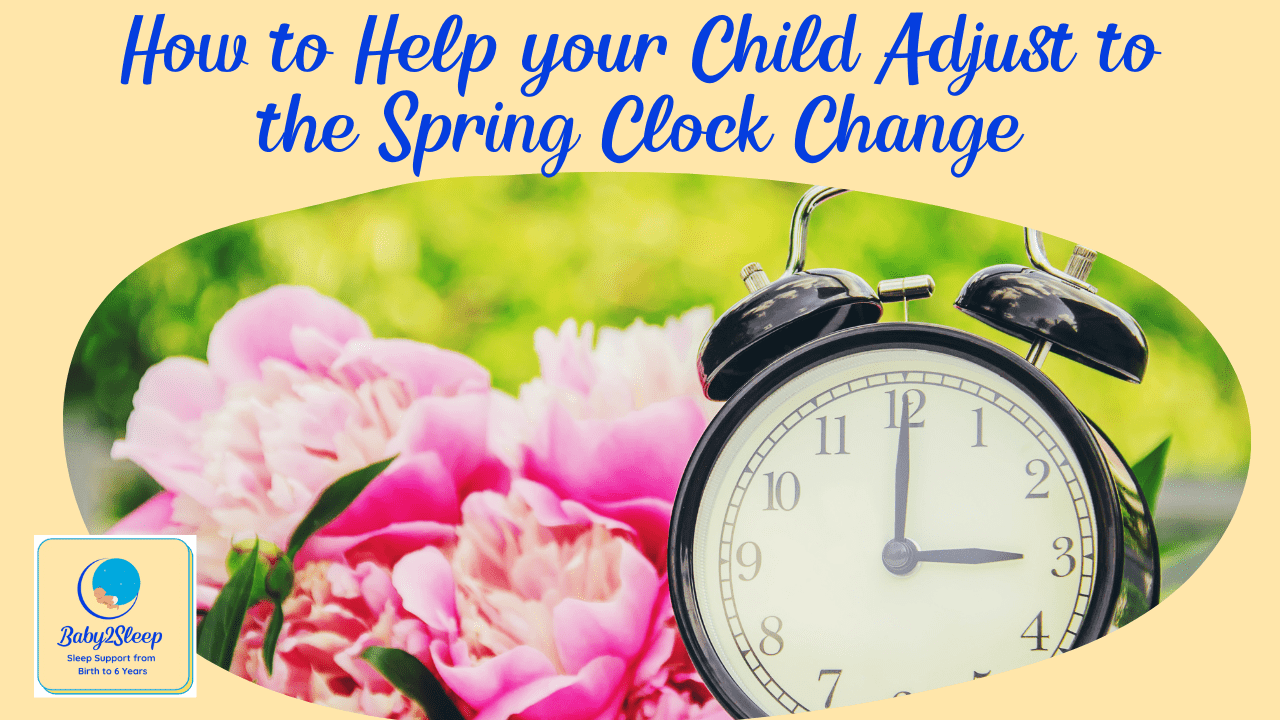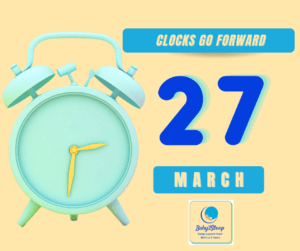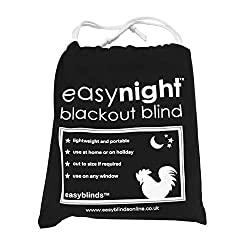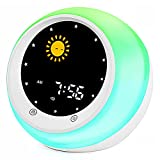
How to help your child adapt to the Spring Clock Change
Adapting to the Spring Clock change
Today I’m doing a video on how best to manage the spring clock change which happens in the UK on March 27.

In this video and blog – I’m recommending a few products, and I have used affiliate links. As an Amazon Associate, I earn from qualifying purchases. This means that if you purchase those products using my link, I will receive a small commission. You will see more details of each product demonstrated in the video, and you will be able to see that I really use them and recommend them.
Today’s video is quite a long one as I am showing things and describing them – the transcript below is shortened a little to exclude the descriptions of what you see on the screen.
This year, the spring clock change happens and the clocks move forward in the UK on March 27th.
Before children, we would have been moaning about this and saying we were losing an hour’s sleep. However, if you’ve got children, we can really use this clock change to our advantage.
If you have little ones that are stuck in a bit of an early-rising rut, or an early-to-bed rut, this is the perfect time to reset their body clocks. We can move a. six o’clock wake-up to seven o’clock pretty much instantaneously, or we can use this clock change to catch them up on sleep and move that bedtime stuck at six o’clock to more of a seven o’clock bedtime without really having to do much. So it’s absolutely fantastic.
Come autumn, obviously, that’s the one which as parents, we don’t like. Pre-children, the autumn clock change is the one w love because we get an extra hour in bed. But it doesn’t work that way with children does it – that six o’clock wake up becomes five o’clock. So we really want to take this spring clock change and use it to our advantage and help our little ones rebalance their sleep. And we can obviously move our wake-up times and bedtimes a bit later if that’s what we want to do.
The sun is out. It’s lighter in the mornings, it’s lighter in the evenings. And this comes with a whole other set of problems. So before I talk about the clock change specifically I’m going to talk about other ways to manage the lighter mornings and evenings that are coming
Blackout Blinds
I’ve already noticed we’ve had to put the blackout blinds back up because Sofia started saying that she’s waking up and it’s lighter. There are various different types you can get out there – you can get permanent ones, ones with suckers and velcro ones. The ones I like are the Easy Night Blackout Blinds that fasten with Velcro (at this point the video shows a demonstration of the Easy Night blinds)

EasyNight Blackout blinds
I absolutely love them and I have similar ones over at my mum’s as well when we go there. I think it’s really important when you’ve got little ones that are early rising, to try and combat that a little bit by putting something in place to help them. The reason I absolutely love the Easy Night ones, they are portable and they are easy and if you get them on right, you can literally cover every single crack.
Sleep Clocks
So that’s one thing for early rising, and another thing you can use is to sleep clock. Sleep clocks are funny because people wonder will my child understand them. Will they not understand them? What’s the best sort to go for? Do they give off too much light? It’s always a bit tricky.
I’ve used a variety of different types of clocks over the years. We’ve used the GroClock. We’ve used the Claessens sleep clocks, the kid’s sleep clocks with the rabbit awake, and rabbit asleep, which I always used to recommend. I still absolutely love that one, and again, it doesn’t give off too much light, which is the problem with the GroClock.
More recently, though, over the last couple of years or so, there has been a shift in the types of sleep clocks that are available.
Sleep Clocks can help your child learn whether it’s morning or whether it’s still nighttime. The one I’ve been using most recently is the I-Code one. The other thing that I really like about this clock, is when you unplug it and you plug it back in, it’s still got its memory. You don’t have to reset the clock. So if you want to take it anywhere you can. Also, you can put a night light on and you can set the light on a timer as well, so it’s on for say 15 minutes while your child goes to sleep. (Video shows a demonstration of the Code clock and light)
iCode Sleep Clock
Children as young as 20 months can understand the very basic form of a sleep clock. They can simply look at the clock and know if is it nighttime still or if is it okay to get up. And if it’s not okay to get up because it’s still nighttime, they just need to stay in their bed. It doesn’t mean they have to go back to sleep. It’s just letting them know that it is still nighttime. And if you’re tired, you can go back to sleep, but if you think you’ve had enough sleep, you can just chill in your room for a little bit and shout at us when the sun comes up.
Dimming the Lights
As the evenings get lighter there’s another thing we can do too to help our little ones know that it’s bedtime. On lighter evenings our little ones might not be wanting to go to sleep at the time that we want them to go to bed. So again, it’s about trying to set the scene before they go to bed. If you have followed any of my stuff, you’ll know, I’ve talked about melatonin. Melatonin only produces an hour to 2 hours before bedtime, and it is only produced in dim light
The difficulty with that is if the sun’s blazing at 7 pm, that’s going to make it really hard for our children’s bodies to produce melatonin. So we need to take a little bit of responsibility and say, I need to start getting my child ready for bed. I need to get their body clock ready for going to bed. I need to shut out some natural light. So this might mean coming indoors and closing the curtains downstairs or the blinds or whatever it might be just to try and dim the lights down.

Waking up in the Night
So when your children wake up in the night or if you’re getting them ready for bed, you might not want to put a bright on. Now, blue light and white light, they’re inhabitants of melatonin. So when you look at your alarm clock, for example, you might notice that the numbers are red. And that’s because red light is the colour that least inhibits melatonin.
This is my daughter’s Ladybug night light which glows red at night. I’m going to flip the lights off so you can see. (video demonstration of nightlight) This is absolutely fantastic because we get enough light, we can see what’s going on in the room. If you need to do a nappy change in the night or something like that and you need some kind of light, it’s brilliant for that.
Ladybug night light
And also, you can also see while I’m here, how the sleep clock really isn’t that bright either. You can see how dark it’s in here, which is absolutely brilliant. So you can see how dark it is just with those blackout blinds and that’s in the day. So you can see how useful they are as well for helping block out that light.
If you’re looking for a nightlight to leave on at bedtime, I love this one. I don’t know what they’re like, now they’ve got them where they have lights coming off them. But this one is one that my daughter can put on herself and it only lasts for ten minutes. So it goes off when she’s asleep. So I’m not having to mess around with it, which is brilliant. But yeah, that comes with a Bing Teddy as well. The tiny Bunny, Bing Teddy and owl night light.
Spring Clock Change: Resetting the Body Clock
So now we’ve looked at some strategies to help a child sleep at bedtime and avoid waking early. It’s time to look at how we can use the clock change to our advantage and help our little ones adjust to the new times.
Our bodies get used to doing the same thing at the same time every night. Melatonin produces at the same time every night, as long as we are in the right environment for that to happen.
If bedtime is seven o’clock for example, and your little one is still out riding their bike at seven o’clock, that melatonin is not being produced because they’re not in the right environment. So it’s about sending messages to the brain to say it’s time to go to bed.
So what we do in the run-up to bedtime is really important.
We get used to waking at the same time every day. Then We get used to going to bed at the same time every night. So We might be hungry at similar times during the day as well if we eat at set times if we have breakfast at the same time. If we have lunch at the same time if we have tea at the same time. These are all times that our body clock is used to doing certain things. And it might tell us that we’re hungry, it might tell us that we’re ready for bed. It might tell us it’s time for us to get up in the morning.
So it’s really important that we listen to this and we understand it because when we’re going to go and make this change, as we say, we’re losing an hour.
It’s actually a lovely clock change, but it’s not so straightforward because our little ones don’t understand this. They don’t realise that they’re waking up an hour later. Something like that than what they would normally wake up. Their body clock will just be used for the same thing. So what we need to do is understand this a little. So we can work in multiple ways, which are explained in more detail in the video.
Check your Smoke Alarms
The other thing, I just want to mention, the spring clock. Change is a really good time to check your smoke alarms. So just do a quick test of your batteries, and make sure that they are working.
It’s always something I’ll remind you of at the autumn clock change and the spring clock change. Always check your smoke alarms and make sure they’re working. The other thing as well, is very quickly on smoke alarms. I saw a video on this and it’s really worth knowing – is if you possibly can, to keep all your doors properly shut rather than I know it’s really easy for us to leave our doors open a little bit, but I watched a video of actually if there was a fire in the house, how bad that can actually be if the doors are open a little bit.
So really, if you can shut them, it’s a safety precaution. Basically, if there was a fire, it’s a way of it stopping getting into that room.It slows it down dramatically. So check your smoke alarms and try and keep your doors short if possible. Throughout the night just for a worst-case scenario. We hope that never happens. But it’s something I watched once and I thought it was quite terrifying to see. What happens on the doors that are open as opposed to completely shut.
So that’s a bit of information there. I hope you find it helpful. Obviously, your child will take a few days to adjust, so will you. It always happens that way. Our bodies aren’t just suddenly kind of go, oh, yeah, that’s fine.
I’ll go to bed like then, no problem. I’ll just go to bed earlier. No issues. We don’t do that as adults. We won’t do that.
Our body clocks will be set to go to bed at the same time as normal. So we’ll end up trying to go to bed an hour later. Try not to, because you could actually do yourself a favour here and catch up on a bit of sleep. But we will get ourselves back on track very quickly. We just have to help and guide our little ones.
If after about a week after the spring clock change. You’re not back on track or if you were never on track in the first place. If you’re struggling, just reach out to me and let me help you. We do the live Q and A’s every Monday night on the Facebook page and Instagram. I’ve also got online plans and courses right through up to six years old. I also work with people on a one-to-one basis as well. So there’s loads and loads of help available.
I know it’s been quite a mammoth video, but we’ve talked quite a bit about a few different things that might help combat early rising, a bit about the body clock and the spring clock change, a bit about directing you where to go for things like your pre-bedtime routines and sleep conducive bedtime routines. So make sure you subscribe to the YouTube channel as well because we’ve always got new videos coming out that are really, really helpful to give you loads of free advice and free help. So subscribe to the YouTube channel. Every time we do another new video you’ll get a notification but have a flick through. We’ve got so many videos on there that are really useful and I hope you find them helpful. Let me know how you get on with the clock change. At one of our Monday night Q and A’s and I’ll see you soon.



